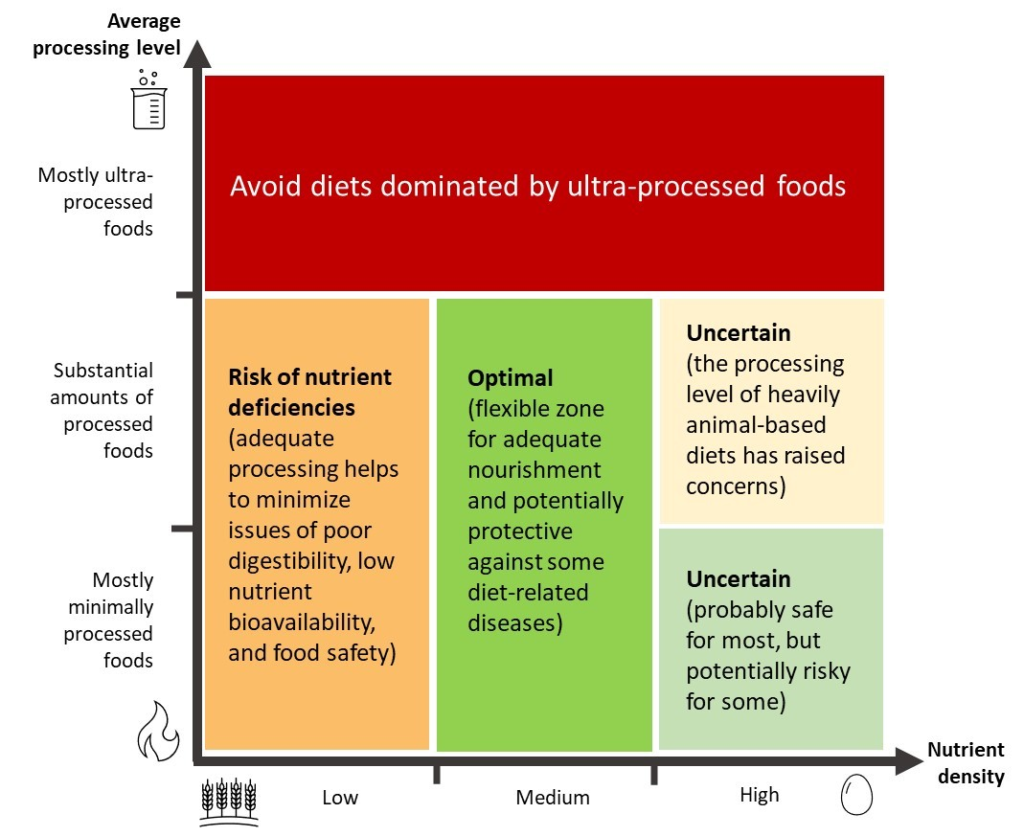March 25, 2025
The Nourishment Table: A Blueprint for Eating Like Tomorrow Matters

Aim for the green!
The Nourishment Table is a new dietary framework introduced from Brussels that aims to guide people toward healthier food choices by emphasizing nutrient density and the degree of food processing.
Unlike traditional dietary guidelines that focus primarily on calories, portion sizes, and food groups, the Nourishment Table encourages individuals to evaluate their food based on its nutritional value and how much it has been processed. Foods high in essential nutrients such as vitamins, minerals, and healthy fats are prioritized, while heavily processed foods—those that have been stripped of nutrients and contain artificial additives—are discouraged. This shift emphasizes the quality of the food rather than just the quantity, promoting a more holistic approach to eating.

At the core of the Nourishment Table is the belief that not all calories are created equal. For example, 100 calories from whole vegetables, lean proteins, or nuts will have a much more positive effect on the body than 100 calories from highly processed snacks or sugary beverages. This framework helps individuals make informed decisions by distinguishing between whole, minimally processed foods that are rich in nutrients and ultra-processed foods that contribute little to overall health. The goal is to empower people to choose foods that provide their bodies with the fuel they need, improving health outcomes and preventing chronic diseases linked to poor diets, such as obesity, diabetes, and heart disease.
Here’s another perspective… the sixth and ninth domains are probably of higher concern due to the amount of processing that meat requires for shelf stability (think hot dogs), as well as the amount of cooking required for palatability (most of us don’t like raw meat, which is the most nutrient dense but also has some possible dangers from bacteria).
In addition to encouraging healthier food choices, the Nourishment Table also brings attention to the environmental and social impacts of food processing. Heavily processed foods often come with environmental costs, such as higher energy consumption, packaging waste, and the depletion of natural resources, which the framework seeks to minimize by promoting more sustainable food options. Moreover, the table encourages people to opt for fresh, local, and seasonally available foods, supporting local farmers and reducing the carbon footprint of transportation. By making people more aware of both the personal and global implications of their eating habits, the Nourishment Table aims to foster healthier, more mindful, and sustainable dietary practices across the population.
The Nourishment Table is an exciting and innovative approach to healthy eating because it shifts the focus from counting calories to making nutrient-rich, less processed food choices. By emphasizing quality over quantity, it empowers people to nourish their bodies with the best possible options while also promoting sustainability and mindful consumption

